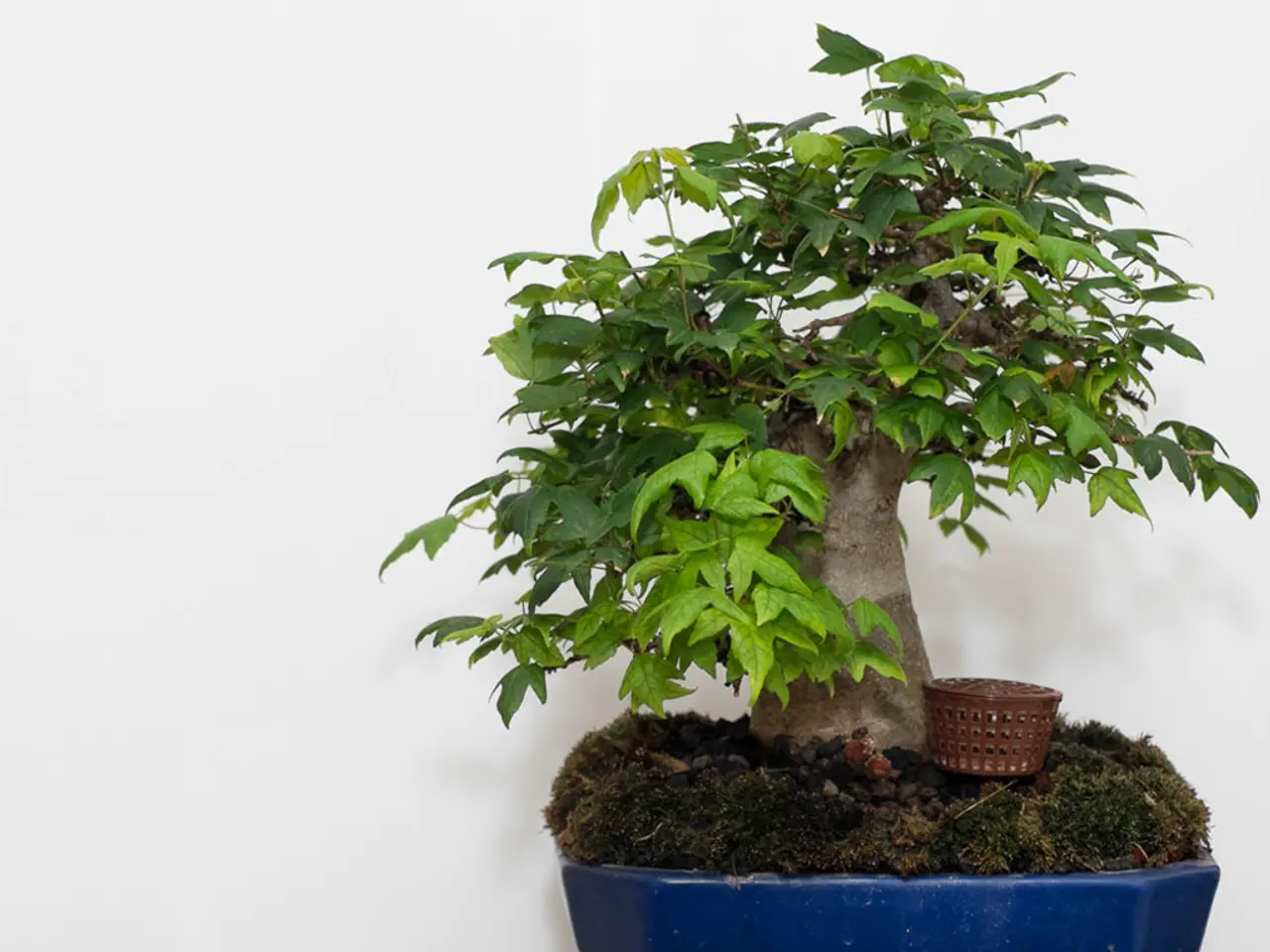Cultivating Bonsai Concepts for Kids: Brainstorming Innovative Ideas for Green Thumb Rookies
Unraveling the Secrets of Bonsai: A Journey of Discovery
Young researchers, drawn to the captivating world of bonsai, embark on a quest to understand the intricate growth and development of these miniature trees. The journey begins with a specific question, born from curiosity, that guides their inquiry.
The study of bonsai species can reveal hidden secrets, shedding light on the remarkable diversity of these plants. A comparative study of various bonsai species can uncover the intricate relationships between species-specific traits, environmental factors, and growth patterns.
In the pursuit of reliable and meaningful results, young bonsai scientists must carefully identify and control the variables that could influence their experiment's outcome. Controlled variation in light exposure, precise watering regimes, soil property manipulation, and hormone-targeted pruning are key tools in exploring and optimizing the developmental biology of bonsai trees.
Light studies involve varying light intensity and duration to observe effects on growth rates, leaf development, and energy balance. For instance, bonsai artists and scientists often provide bright indirect sunlight optimized for species, adjusting exposure to study photosynthesis and bud development.
Watering experiments use controlled watering schedules based on soil moisture measurement. Researchers may test soil field capacity and saturation porosity levels by thorough flooding and letting soil drain naturally to analyze water availability effects on root and shoot growth.
Soil composition studies manipulate soil types by varying organic content, drainage, and pH levels to evaluate nutrient uptake and root health. Air layering and root pruning techniques influence root architecture, which is crucial for bonsai stability and nutrient uptake.
Hormone regulation and pruning effects are also crucial. Pruning experiments explore apical dominance by removing terminal buds or branches to promote lateral or stronger root growth, changing hormone flows and aiding bonsai shaping. Strategic pruning during development vs. refinement stages controls species-specific hormone levels influencing branch thickness, ramification, and growth speed.
Common scientific methods include controlled environment growth chambers, soil moisture sensors and pH meters, experimental pruning and wiring, repeated repotting with root pruning, and time-lapse photography. These methods, combined with detailed observation and record-keeping, enable both hobbyists and scientists to analyze how each factor interacts to influence bonsai tree growth and development systematically.
While direct sunlight is ideal, bonsai trees can thrive indoors with indirect sunlight or artificial lighting, provided they receive sufficient photoperiods and intensities. As they gather data, children can begin to identify patterns and trends, laying the foundation for meaningful insights and discoveries.
Using regular potting soil for a bonsai tree can hinder growth, as it may retain too much water and cause root rot; instead, opt for a well-draining, specifically formulated bonsai soil. The culmination of a well-designed experiment is the collection and analysis of results, where young bonsai scientists carefully examine and interpret the data they have gathered to uncover meaningful insights about their miniature trees.
By controlling variables, children can isolate the specific aspect they wish to study, allowing them to draw more accurate conclusions about the impact of their chosen factor. Through this symbiotic union of art and science, the next generation of scientists and environmental stewards is nurtured, equipped to tackle the complex challenges of a rapidly changing world.
In conclusion, as young minds venture into the domain of bonsai science, they set out on a journey of discovery, cultivating a profound appreciation for the intricate web of life. With their data analyzed and trends identified, young bonsai scientists are now poised to draw meaningful conclusions about their research, reflecting on the implications of their findings and the broader significance of their miniature trees in the world of plant biology.
To create an engrossing presentation, bonsai scientists should use visual aids such as diagrams, charts, and photographs to illustrate complex concepts and findings. The time required to create a mature bonsai tree varies greatly, ranging from 5-50 years, depending on factors such as species, climate, care, and training. Frequent watering can stimulate bonsai growth, but it's crucial to strike a balance, as overwatering can lead to root rot and other issues.
In the domain of bonsai, scientific experiments might explore the effects of varying light intensities, watering schedules, or nutrient availability on plant growth and development. To study the growth and development of bonsai trees with a focus on light, water, soil composition, and hormone regulation, researchers and enthusiasts employ a variety of experiments and scientific methods. By transforming their research findings into a compelling narrative, young bonsai scientists can effectively communicate the significance of their discoveries to a wider audience.
- Young researchers, in the realm of health-and-wellness and personal-growth, eagerly embark on a quest to understand bonsai trees, a fascinating symbol of mental-health and lifestyle, through science.
- Learning about the diverse bonsai species might not only benefit horticulture but also contribute to education-and-self-development, revealing the intricate relationships between their specific traits, environmental factors, and growth patterns.
- To ensure credible and valuable outcomes, these young scientists employ nutritional approaches, such as controlled variation in light exposure, soil types, precise watering regimes, and targeted hormone-based pruning techniques, in their experiments.
- Utilizing techniques like air layering and root pruning, they aim to influence root architecture, essential for bonsai stability and nutrient uptake, which is integral to the overall fitness-and-exercise of these miniature trees.
- To effectively communicate their findings and create an engaging presentation, they incorporate visual aids like diagrams, charts, and photographs, reflecting the symbiotic union of art, science, and the home-and-garden lifestyle embodied within the practice of bonsai cultivation.




